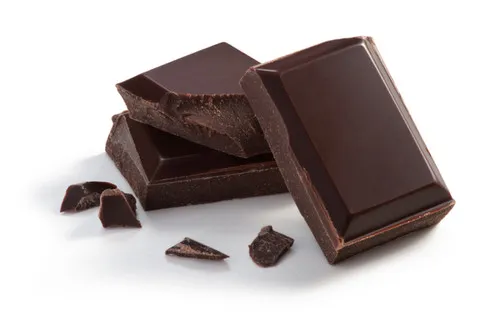Caring for a dog with liver disease requires a specialized dietary approach, with a particular focus on Low Protein Homemade Dog Food For Liver Disease. The liver plays a crucial role in detoxification, metabolism, and nutrient synthesis, and when its function is compromised, diet becomes a cornerstone of management. Crafting a homemade hepatic diet ensures fresh, high-quality ingredients tailored to your dog’s specific needs, but it’s paramount to work closely with your veterinarian to formulate a plan that supports liver health without causing other nutritional deficiencies. This guide provides essential insights into creating a liver-friendly diet for your canine companion, emphasizing the critical balance of nutrients and the importance of professional veterinary guidance.
Understanding Liver Disease and Dietary Needs
Liver disease in dogs can range from acute conditions to chronic issues, each impacting the liver’s ability to process nutrients and eliminate toxins. A key aspect of managing this condition through diet is often moderating protein intake. While protein is essential, an excess can lead to the production of ammonia, a byproduct that a compromised liver struggles to process, potentially leading to hepatic encephalopathy. Therefore, providing high-quality, easily digestible protein in controlled amounts is vital. what food dogs can t eat
The primary goal of a low protein homemade dog food for liver disease is to reduce the metabolic workload on the liver, prevent nutrient deficiencies, and minimize the accumulation of toxins. This involves careful selection of protein sources, appropriate carbohydrates for energy, and controlled fat intake, along with essential vitamins and minerals. Every dog’s condition is unique, making veterinary consultation indispensable for personalized dietary recommendations and ongoing monitoring.
Key Components of a Low-Protein Homemade Hepatic Diet
Creating a balanced low-protein homemade dog food for liver disease involves a thoughtful selection of ingredients. These components work together to support liver function, provide necessary energy, and maintain overall health.
1. High-Quality, Easily Digestible Protein
For dogs with liver disease, the quality and digestibility of protein are more important than the quantity. Opt for lean, easily digestible protein sources that minimize metabolic waste products. These include skinless chicken breast, lean turkey, or white fish, all cooked thoroughly to remove any excess fat. While red meats and organ meats are typically high in protein and harder for the liver to process, some vets may advise specific, very lean cuts in moderation. Eggs are another excellent, highly digestible protein source that can be incorporated cautiously. For dogs on vegetarian diets, tofu can serve as a protein alternative. Always ensure all meats are thoroughly cooked without added seasonings or fats.
2. Complex Carbohydrates for Energy
Complex carbohydrates are essential for providing a steady source of energy without taxing the liver excessively. Good choices include brown rice, sweet potatoes, and oats. These carbohydrates are slow-releasing, which helps maintain stable blood sugar levels and reduces the liver’s need to produce glucose from other sources. Ensure all carbohydrates are cooked thoroughly until soft for optimal digestibility.
3. Healthy Fats in Moderation
Fat intake should be carefully limited in a hepatic diet, as a compromised liver may struggle to metabolize fats efficiently. However, some healthy fats are necessary for nutrient absorption and overall health. Small amounts of beneficial fats like olive oil or flaxseed oil can be added to the diet. These provide essential fatty acids without overwhelming the liver. Always consult your veterinarian for the appropriate amount of fat for your dog’s specific condition.
4. Fiber-Rich Vegetables
Incorporating fiber-rich vegetables is crucial for digestive health and can help regulate bowel movements, which aids in the excretion of toxins and reduces the liver’s burden. Carrots, green beans, and broccoli are excellent choices. These vegetables should be steamed or boiled until soft and chopped into small, easily digestible pieces. Fiber also contributes to a feeling of fullness, which can be beneficial for portion control.
5. Essential Supplements
Depending on your dog’s specific liver condition, your veterinarian may recommend various supplements. These often include B vitamins, which are crucial for liver function and can be depleted during disease; antioxidants like vitamin E and C to combat oxidative stress; and omega-3 fatty acids, known for their anti-inflammatory properties. Never administer supplements without veterinary guidance, as incorrect dosages or types can be harmful.
6. Portion Control and Hydration
Feeding smaller, more frequent meals can significantly reduce the liver’s workload, as it allows the organ to process nutrients more efficiently. Monitor your dog’s weight regularly and adjust portion sizes as needed to maintain an ideal body condition. Consistent access to fresh, clean water is also vital to maintain proper hydration and support kidney function, which works in conjunction with the liver to eliminate waste products.
Foods to Strictly Avoid When Preparing Homemade Dog Food for Liver Disease
When preparing homemade dog food for liver disease, it is critical to be aware of and strictly avoid certain foods that can be toxic or detrimental to a dog’s already compromised liver. what food should i not feed my dog
- Onions and Garlic: These common kitchen ingredients contain compounds that can damage red blood cells in dogs, leading to anemia and further stressing the liver.
 Whole and sliced onions, a common kitchen ingredient toxic to dogs
Whole and sliced onions, a common kitchen ingredient toxic to dogs - Grapes and Raisins: Even small amounts of grapes and raisins can cause sudden kidney failure in some dogs, which can have devastating effects on overall organ function, including the liver.
 Fresh grapes and blueberries in bowls, highlighting fruits toxic to dogs
Fresh grapes and blueberries in bowls, highlighting fruits toxic to dogs - Chocolate: Contains theobromine, a stimulant that is toxic to dogs and can cause severe liver damage, among other health issues.
 Pieces of dark chocolate, a well-known toxic food for dogs
Pieces of dark chocolate, a well-known toxic food for dogs - High-Fat Foods: Fatty cuts of meat, fried foods, and excessive oils can exacerbate liver issues and should be completely avoided.
- Highly Processed Foods: Commercial dog treats or human foods high in artificial additives, preservatives, and unhealthy fats can place additional strain on the liver.
- Alcohol: Even small amounts of alcohol can be highly toxic and cause severe liver and neurological damage.
- Avocado: Contains persin, which can be toxic to some animals, though its effects on dogs are debated, it’s best to avoid it for dogs with compromised health.
- Nutmeg: Can cause neurological issues and digestive upset.
- Xylitol: A sugar substitute found in many human foods and products (like sugar-free gum and some peanut butters) is extremely toxic to dogs and can cause rapid liver failure.
what are foods that dogs can t eat Considering a barf diet for dogs is a different approach to homemade feeding; however, a hepatic diet requires specific preparation and approval from your veterinarian to ensure it meets the low protein and digestibility requirements crucial for liver health. While it’s essential to understand what food is bad for puppies, the dietary needs for a dog with liver disease are specialized and may differ significantly from those of a healthy puppy.
Sample Low-Protein Homemade Hepatic Dog Food Recipe
This recipe serves as a general guideline. Always consult your veterinarian for specific portion sizes and exact ingredient recommendations tailored to your dog’s individual health status and weight.
Ingredients:
- 1 cup cooked lean chicken or turkey, shredded (ensure no skin or fat)
- 1/2 cup cooked brown rice
- 1/4 cup cooked and mashed sweet potatoes
- 1/4 cup steamed green beans, chopped
- 1 teaspoon olive oil (optional, consult your vet)
- Canine multivitamin and mineral supplement (as recommended by your vet)
Instructions:
- Prepare Protein and Carbs: Cook the chicken/turkey and brown rice thoroughly and separately. Do not add any seasoning, spices, or oils during cooking.
- Cook Vegetables: Steam or boil the green beans and sweet potatoes until they are soft. Mash the sweet potatoes.
- Combine Ingredients: In a bowl, mix the shredded meat, cooked brown rice, mashed sweet potatoes, and chopped green beans together.
- Add Fat (Optional): If advised by your vet, add a small amount of olive oil for healthy fats.
- Cool and Supplement: Allow the food to cool down to room temperature before serving. Incorporate the canine multivitamin and mineral supplement according to your veterinarian’s specific recommendations and dosage instructions.
Remember, this recipe is a starting point. Your veterinarian is your best resource for customizing a diet plan that is safe, effective, and nutritionally complete for your dog’s specific liver condition.
Conclusion
Providing a low protein homemade dog food for liver disease can be a highly effective way to support your dog’s health and manage their condition. By carefully selecting high-quality, digestible ingredients, controlling protein and fat intake, and avoiding toxic foods, you can significantly reduce the strain on their liver. However, the complexity of liver disease necessitates a collaborative approach with your veterinarian. They can provide accurate diagnoses, tailor dietary plans to your dog’s unique needs, and recommend appropriate supplements. Through dedication and expert guidance, you can offer your beloved canine companion the best possible chance at a healthy and comfortable life.
References:
- Center for Veterinary Medicine – U.S. Food and Drug Administration. (2021). “Liver Disease in Dogs: Diet and Nutrition.”
- American Veterinary Medical Association (AVMA). (2021). “Hepatic Disease in Dogs and Cats: An Overview.”
- American Veterinary Medical Association. (2019). Liver Disease in Dogs. https://www.avma.org/resources/pet-owners/petcare/liver-disease-dogs
- Hill’s Pet Nutrition. (2021). Hepatic Dog Food. https://www.hillspet.com/dog-food/pd-canine-hepatic-dry
- Center for Veterinary Medicine (FDA), “Liver Disease and Diet in Dogs”: https://www.fda.gov/animal-veterinary/animal-health-literacy/liver-disease-and-diet-dogs
- Center for Veterinary Medicine, U.S. Food and Drug Administration. “Homemade Diets for Dogs and Cats.” https://www.fda.gov/animal-veterinary/animal-health-literacy/homemade-diets-dogs-and-cats
- American College of Veterinary Nutrition. “Home-Prepared Dog and Cat Diets.” https://www.acvn.org/home-prepared-diets


 Fresh grapes and blueberries in bowls, highlighting fruits toxic to dogs
Fresh grapes and blueberries in bowls, highlighting fruits toxic to dogs Pieces of dark chocolate, a well-known toxic food for dogs
Pieces of dark chocolate, a well-known toxic food for dogs